Wondering what Colorado is known for?
From the Rocky Mountains to the Garden of the Gods, Colorado is famous for so many wonderful things and is well worth a visit.
In this guide, we’re going over everything from the food Colorado is famous for to the history Colorado is famous for to the music and culture that define this state.
How do I know? I’ve been to Colorado many times during my travels in the US and have really fallen in love with this state.
From hiking to skiing to city tours and vibrant festivals like Breckenridge Oktoberfest, Colorado truly has it all!
Let’s jump into the best things Colorado is known and famous for so you can get to know this state even better.
1. Rocky Mountains

Colorado’s Rocky Mountains are an awe-inspiring natural wonder that dominates the state’s landscape.
Stretching over 3,000 miles, these majestic peaks offer a playground for outdoor enthusiasts and nature lovers.
The Rockies are not only visually stunning, but they also provide diverse ecosystems, including alpine tundras, lush forests, and serene lakes.
Outdoor activities abound, from hiking challenging trails like the Colorado Trail to scaling the famous Fourteeners (peaks above 14,000 feet) that pepper the region.
During winter, the mountains become a paradise for skiers and snowboarders, attracting visitors from across the globe to its renowned resorts such as Aspen, Vail, and Telluride.
2. Outdoor Recreation
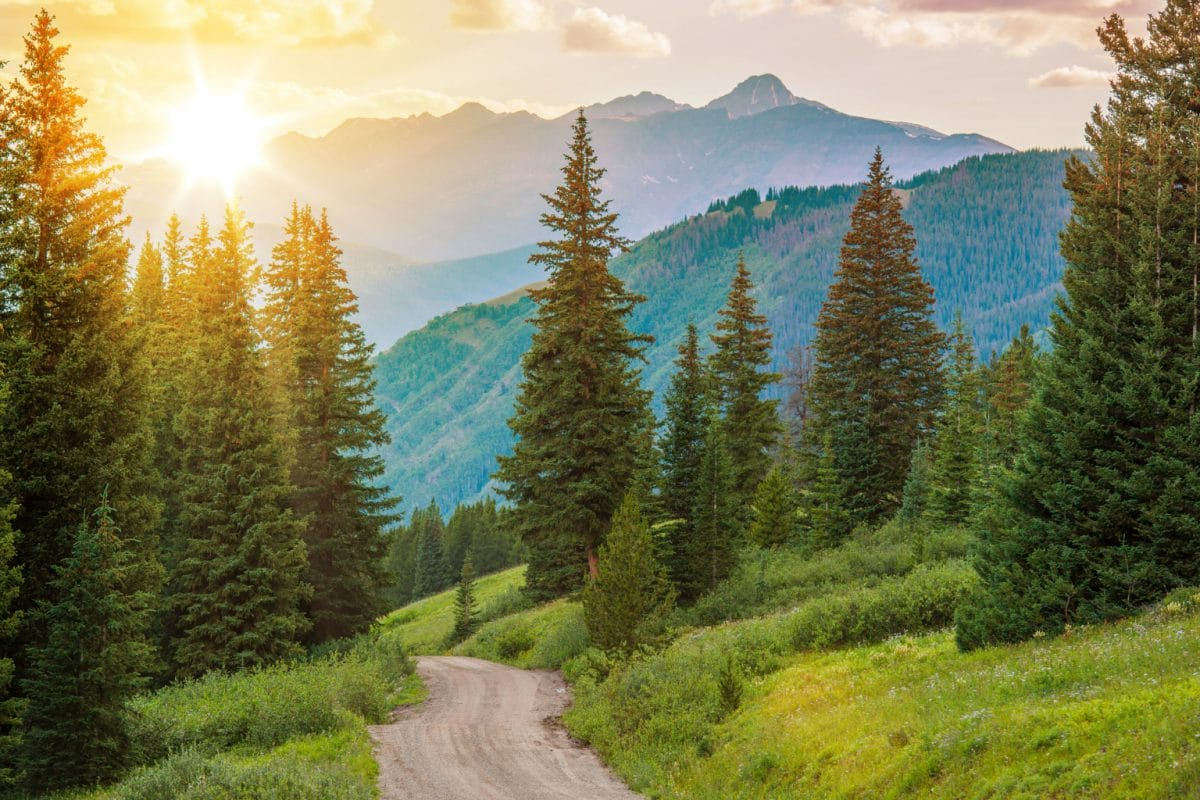
Colorado’s reputation as an outdoor enthusiast’s paradise is well-deserved.
The state offers a myriad of outdoor activities that cater to all interests and skill levels.
Climbers can test their mettle on world-class rock faces in places like Eldorado Canyon or Rifle Mountain Park.
Anglers have access to pristine rivers and lakes, including the famous fly-fishing destinations along the Arkansas River and the South Platte River.
For those seeking adrenaline rushes, Colorado provides opportunities for white-water rafting in the Arkansas and Colorado Rivers, as well as exhilarating mountain biking trails like those in Crested Butte.
Furthermore, the state’s vast network of trails, whether for hiking, mountain biking, or horseback riding, showcases the stunning natural beauty from every angle.
3. Ski Resorts
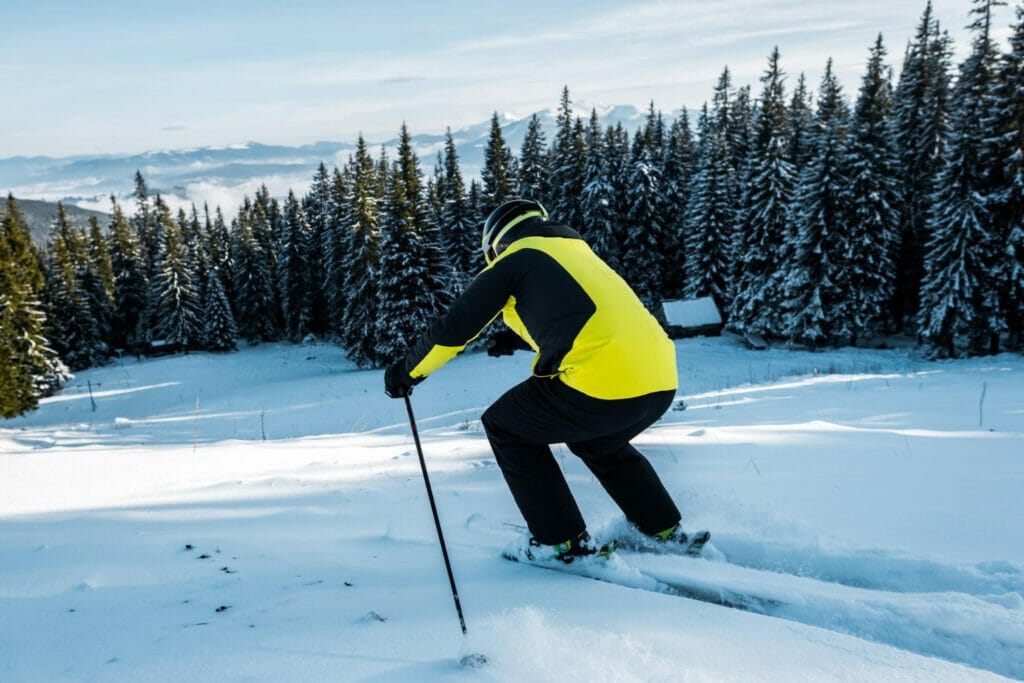
Colorado’s ski resorts are synonymous with winter adventure. Beyond the thrill of carving down pristine slopes, these resorts offer luxurious amenities and vibrant apres-ski scenes.
Aspen, known for its glamorous atmosphere, attracts celebrities and winter sports enthusiasts alike. Breckenridge, a historic mining town, boasts diverse terrain and a charming Main Street.
Vail, with its vast ski area, offers something for everyone, from beginners to experts.
The resorts are not only about snow sports; they’re year-round destinations with summer activities such as zip-lining, mountain biking, and alpine slides.
These resorts have also played a pivotal role in establishing Colorado’s reputation as a world-class tourist destination.
4. Craft Beer

Colorado’s craft beer culture is deeply ingrained in the state’s identity.
With over 400 breweries, the state has become a haven for beer connoisseurs and casual enthusiasts alike.
The movement began in the 1980s with pioneers like New Belgium Brewing Company, which helped popularize craft brewing in the U.S.
The state’s diverse landscape and distinct microclimates contribute to a wide array of ingredients, leading to a rich tapestry of beer styles.
Denver’s Great American Beer Festival is a yearly celebration of craft beer that draws beer aficionados from around the country.
Additionally, the concentration of breweries in cities like Denver and Fort Collins has created vibrant beer scenes with taprooms that serve as community hubs.
5. Legalized Marijuana
Colorado’s decision to legalize recreational marijuana in 2012 made it a trailblazer in drug policy reform.
The move has had significant social, economic, and legal implications.
Cannabis dispensaries have sprouted across the state, offering a variety of products to residents and tourists.
While there are regulations in place, the relaxed stance on marijuana has generated a new tourism industry known as “cannabis tourism.”
Visitors can take part in guided cannabis tours, learn about the cultivation process, and even sample different strains.
However, the topic remains divisive, with discussions revolving around its impact on public health, law enforcement, and social norms.
6. Red Rocks Amphitheatre
Nestled between towering sandstone formations, Red Rocks Amphitheatre is a world-famous concert venue and a geological wonder.
The natural acoustics of the amphitheatre have made it a favorite among musicians and concertgoers alike.
Many legendary artists have graced its stage, and the venue has become an integral part of Colorado’s music scene.
Beyond concerts, visitors can explore the surrounding trails, engage in yoga sessions at sunrise, and enjoy Film on the Rocks, an outdoor movie series.
The ethereal beauty of the setting, particularly during sunset, makes it a sought-after location for events, weddings, and photography.
7. Denver
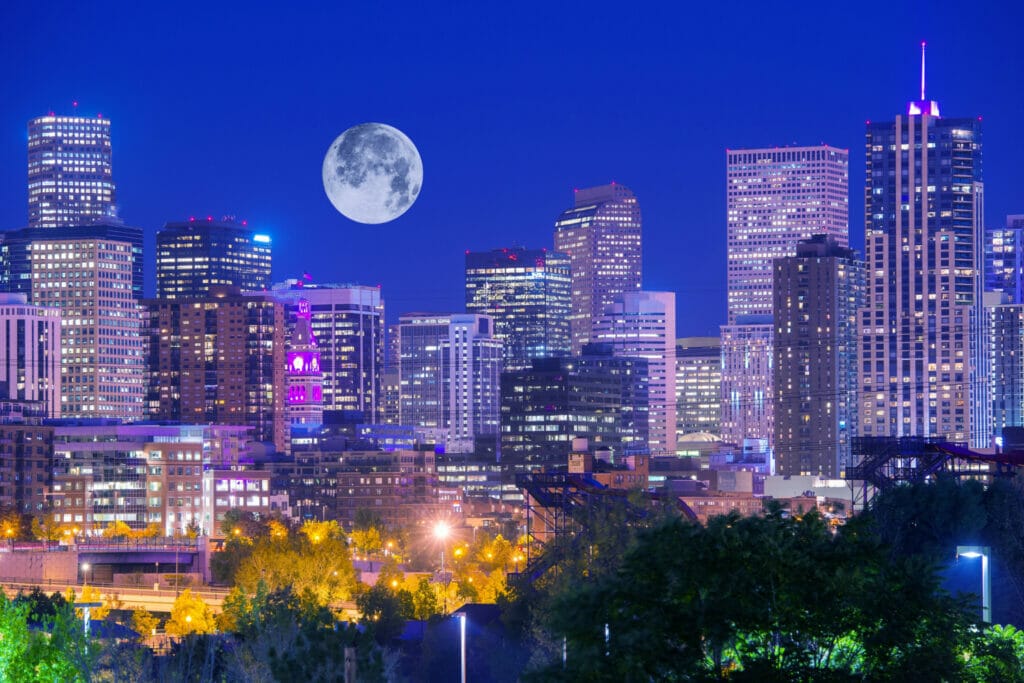
The capital city of Colorado, Denver, strikes a balance between urban amenities and outdoor experiences.
The city boasts a vibrant arts and culture scene, with attractions like the Denver Art Museum and the Denver Performing Arts Complex.
The rejuvenated Union Station serves as a transportation hub and a stylish gathering place with restaurants and shops.
Denver’s diverse neighborhoods offer distinct personalities, from the hipster vibe of RiNo (River North) to the historic charm of LoDo (Lower Downtown).
The Denver Botanic Gardens showcase an impressive variety of plants, while the Museum of Nature & Science provides educational entertainment.
Additionally, Denver is home to several major sports teams, including the Broncos (NFL) and the Nuggets (NBA), providing year-round entertainment for sports fans.
8. Boulder

Nestled at the base of the Flatirons, Boulder is a city renowned for its progressive culture, natural beauty, and academic institutions.
The University of Colorado Boulder brings a youthful energy to the city and contributes to its reputation as a hub for innovation and research.
Pearl Street Mall is a lively pedestrian area featuring boutique shops, restaurants, and street performers.
Boulder’s commitment to environmental sustainability is evident in its bike-friendly infrastructure and numerous outdoor spaces.
Chautauqua Park offers hiking trails that lead to stunning views of the Flatirons, and nearby Eldorado Canyon State Park is a rock climbing mecca.
The city’s unique blend of intellectualism, outdoor recreation, and artistic expression makes it a place unlike any other.
9. Garden of the Gods
Situated near Colorado Springs, the Garden of the Gods is a geological marvel characterized by towering sandstone rock formations that have been shaped by centuries of erosion.
This natural wonder offers a variety of trails that wind through red rock formations, showcasing the contrast between the vibrant vegetation and the dramatic backdrop.
Rock climbing enthusiasts can tackle the challenges presented by the formations’ unique shapes and textures.
The Visitor & Nature Center provides information about the area’s geology and history.
Many visitors are drawn to the opportunity to take in the sunrise or sunset against the backdrop of these stunning natural sculptures.
10. Pikes Peak
Often referred to as “America’s Mountain,” Pikes Peak is one of Colorado’s most iconic peaks.
Rising to an elevation of over 14,000 feet, the mountain offers breathtaking views that inspired the patriotic song “America the Beautiful.” Visitors can reach the summit by car via the Pikes Peak Highway or by hiking the Barr Trail, a challenging but rewarding endeavor.
The views from the summit encompass a panoramic vista of the surrounding landscapes, including Colorado Springs and the sprawling plains beyond.
Pikes Peak is not only a testament to Colorado’s natural beauty but also a symbol of exploration and determination.
11. Mesa Verde National Park
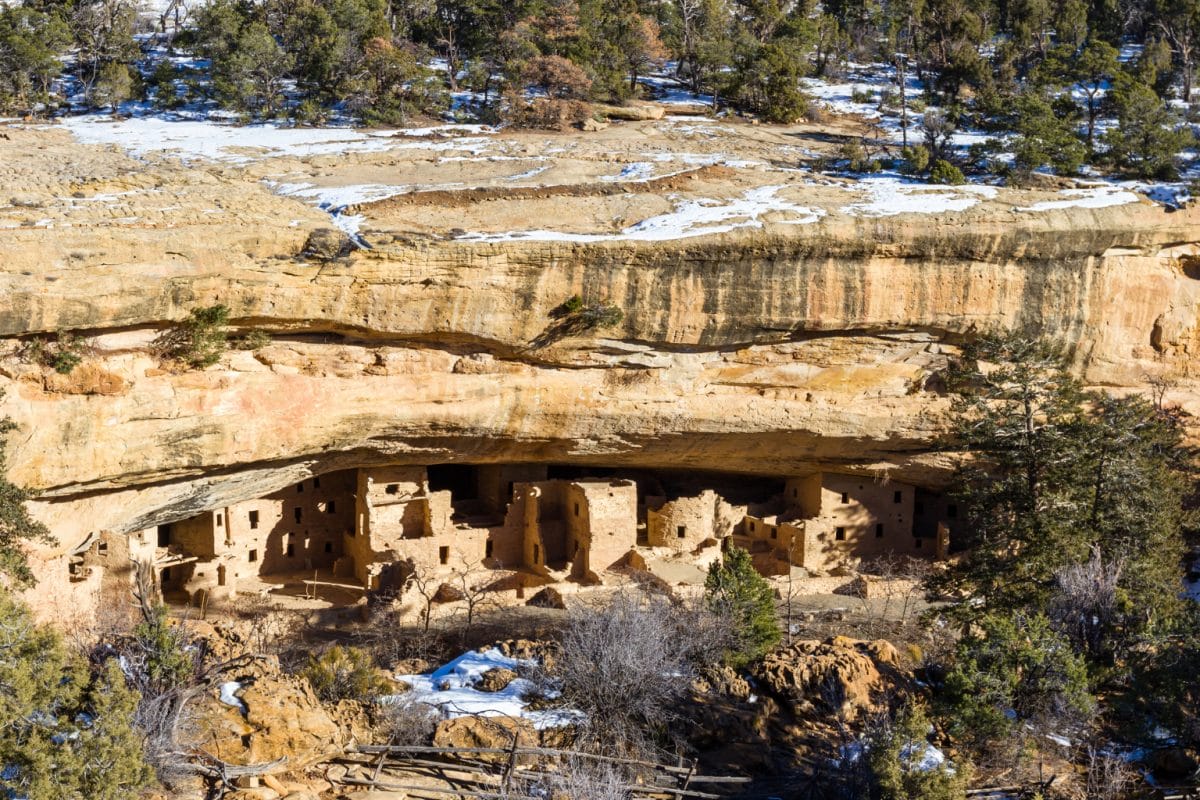
Mesa Verde National Park is a UNESCO World Heritage Site that preserves the ancient cliff dwellings of the ancestral Puebloan people.
These remarkable archaeological sites offer a glimpse into the lives and culture of the Native American inhabitants who built intricate stone structures within the alcoves of the canyon walls.
The Cliff Palace, Balcony House, and Spruce Tree House are among the most well-preserved and accessible dwellings for visitors to explore.
Guided tours provide insights into the history, architecture, and daily lives of the Puebloan people.
The park’s archaeological significance and breathtaking vistas make it a unique destination that bridges the gap between ancient history and the present day.
12. Great Sand Dunes National Park
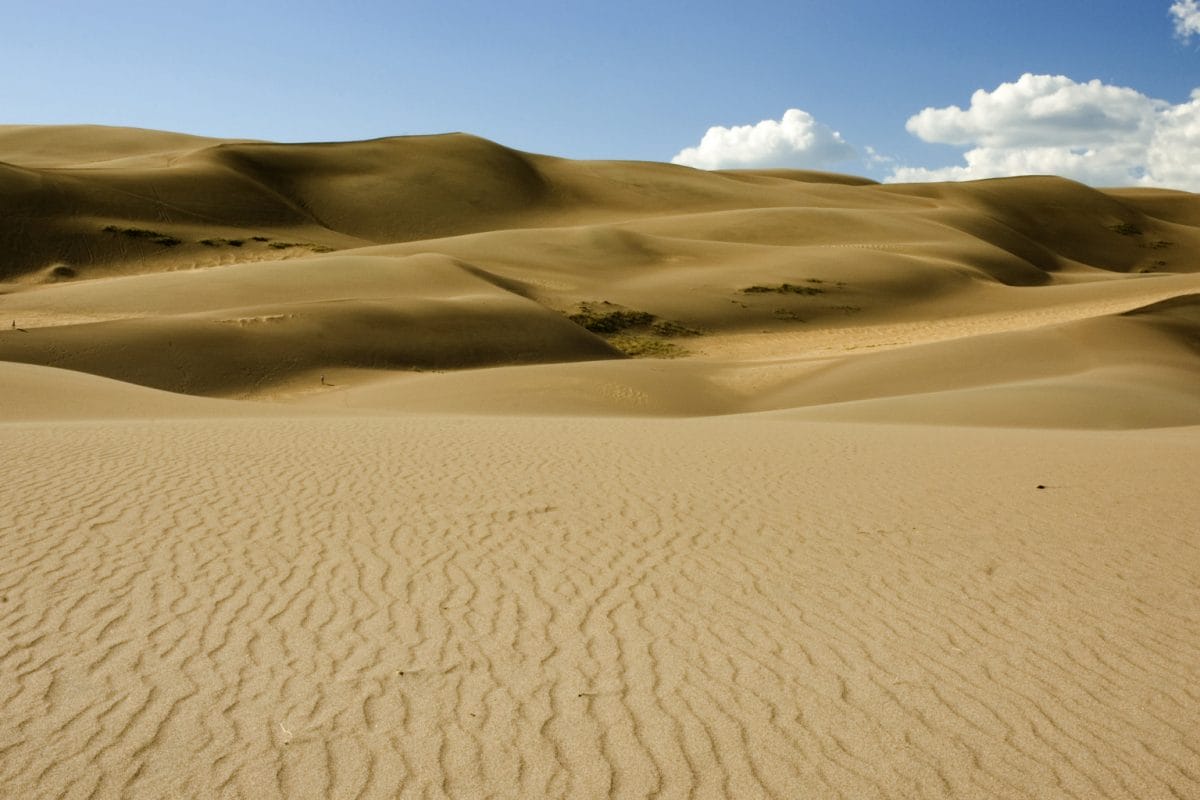
Nestled at the base of the Sangre de Cristo Mountains, Great Sand Dunes National Park is a surreal landscape where towering sand dunes meet alpine peaks.
The juxtaposition of the dunes against the mountains creates a scene unlike any other in the United States.
Visitors can hike to the top of the dunes for panoramic views, sled down the sandy slopes, or explore the diverse ecosystems that include wetlands and forests.
Medano Creek, which flows along the base of the dunes, provides a unique water play area during certain times of the year.
The park’s remote location also makes it an excellent spot for stargazing, with minimal light pollution allowing for clear views of the night sky.
13. Colorado River

The Colorado River is a lifeline that weaves through the heart of the state, carving out dramatic canyons and shaping the landscapes around it.
It originates in the Rocky Mountains and flows through iconic locations like Glenwood Canyon and the Grand Canyon.
White-water rafting is a popular activity on various sections of the river, offering thrilling adventures amid stunning scenery.
The river also supports agriculture, providing water to farms and communities throughout the region.
Its significance to both the environment and human activity underscores its role as a defining feature of Colorado’s geography.
14. Wildlife
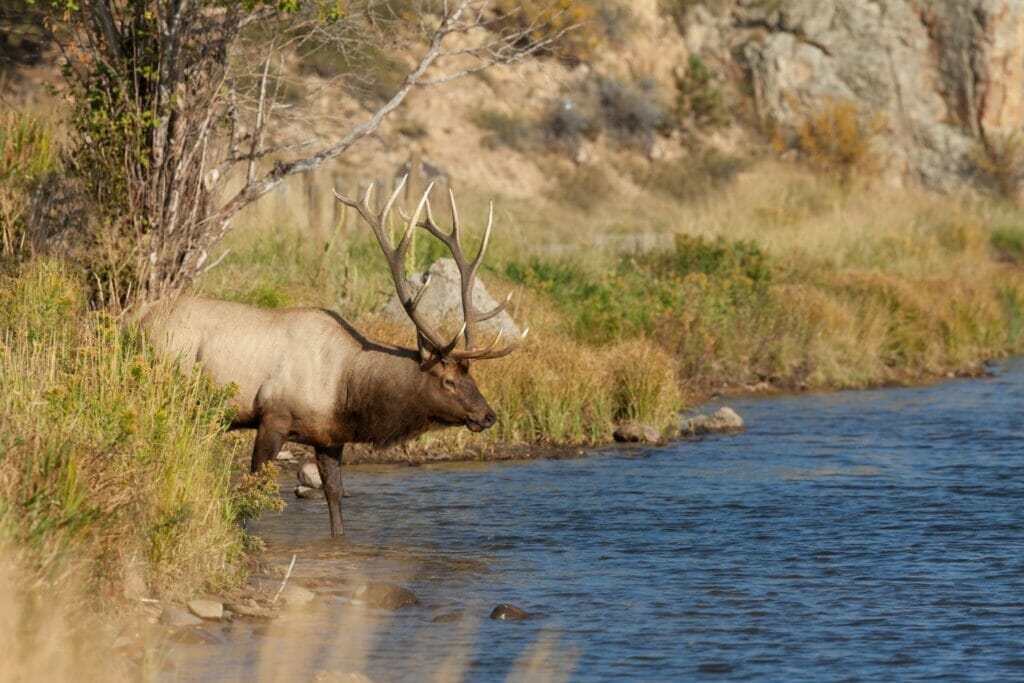
Colorado’s diverse ecosystems provide a habitat for a wide range of wildlife species, making it a paradise for nature enthusiasts and wildlife photographers.
In the high alpine regions, you might spot bighorn sheep scaling rocky slopes, while elk and mule deer roam through the forests.
Black bears, mountain lions, and bobcats inhabit the state’s wilderness areas.
Birdwatchers can look for species like the peregrine falcon, bald eagle, and various migratory birds.
The state’s commitment to conservation and preservation efforts helps protect these species and their habitats, allowing residents and visitors to share in the wonder of observing Colorado’s remarkable wildlife.
15. Denver Broncos
The Denver Broncos are a cherished sports franchise with a dedicated fan base that fills Mile High Stadium, creating an electric atmosphere on game days.
The team’s history is punctuated by memorable moments, including Super Bowl victories and the leadership of legendary quarterback John Elway.
The “Orange Crush” defense of the late 1970s remains an iconic part of NFL history.
The Broncos’ impact extends beyond the field, as they serve as a unifying force for the community and a source of pride for the state.
16. Colorado Rockies

The Colorado Rockies, the state’s Major League Baseball team, brings the thrill of America’s pastime to the region.
Coors Field, located in downtown Denver, offers fans a comfortable and modern venue to enjoy games during the warmer months.
The stadium’s unique features include the Rockpile section, where fans can sit at a high elevation with stunning views of the Rocky Mountains. Baseball enthusiasts gather to cheer on the team, savor ballpark treats, and create lasting memories in a quintessentially American setting.
17. Golfing

Colorado’s diverse landscapes provide a canvas for a range of golf courses, each with its unique challenges and scenic backdrops.
From the stunning mountain courses of Vail and Steamboat Springs to the challenging desert links of Grand Junction, golfers have plenty of options to choose from.
The Broadmoor in Colorado Springs and Cherry Hills Country Club in Denver are among the state’s prestigious courses with a history of hosting major tournaments.
The combination of outdoor recreation and stunning vistas make golfing in Colorado a memorable experience for players of all skill levels.
18. Outdoor Concerts
While Red Rocks Amphitheatre takes center stage, Colorado’s outdoor concert scene extends beyond its iconic venue.
Venues like Fiddler’s Green Amphitheatre in Greenwood Village and the Mishawaka Amphitheatre near Fort Collins offer unique atmospheres for music lovers to enjoy live performances against the backdrop of nature.
Summer concert series and festivals, such as the Snowmass Free Concert Series and the Rocky Mountain Folks Festival in Lyons, provide opportunities to experience diverse musical genres while soaking up Colorado’s outdoor beauty.
19. Craft Distilleries
Colorado’s craft beverage scene isn’t limited to beer; the state has also embraced craft distilleries that produce high-quality spirits.
From whiskey and vodka to gin and rum, Colorado’s distilleries experiment with a wide array of ingredients and techniques.
Distillery tours and tastings allow visitors to gain insights into the art of spirit production, while also sampling unique flavors that capture the essence of Colorado’s creative spirit.
20. Colorado State Capitol
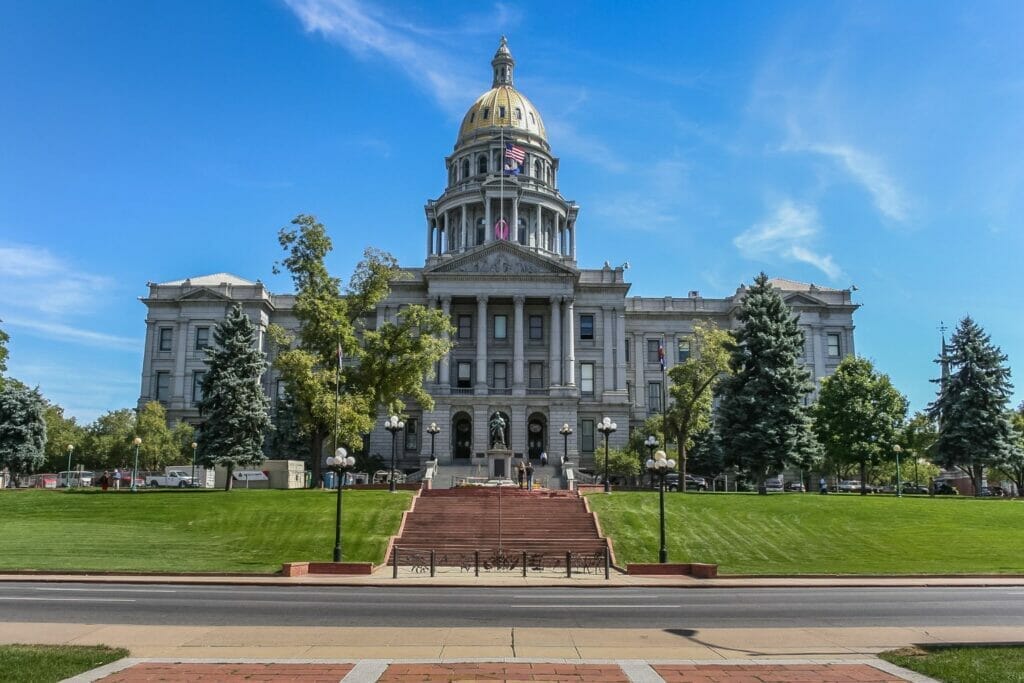
Denver’s State Capitol is an architectural masterpiece that features a distinctive gold-plated dome, symbolizing the state’s historical connection to mining and the Gold Rush era.
Visitors can take guided tours to explore the building’s history, architecture, and art, including the famous “Mile High” step on the west side of the Capitol’s staircase.
The Capitol is also home to the Colorado General Assembly, where laws are debated and enacted, giving visitors a glimpse into the state’s legislative process.
21. Mining History
Colorado’s rich mining history played a pivotal role in shaping the state’s development and identity.
The Colorado Gold Rush of the mid-1800s drew prospectors and settlers, resulting in the establishment of towns and cities across the region.
Historic mining towns like Central City, Black Hawk, and Leadville offer a glimpse into the past, with preserved buildings, museums, and tours that recount the challenges and successes of the era.
The legacy of mining continues to influence the state’s culture, economy, and landscape.
22. Glenwood Springs
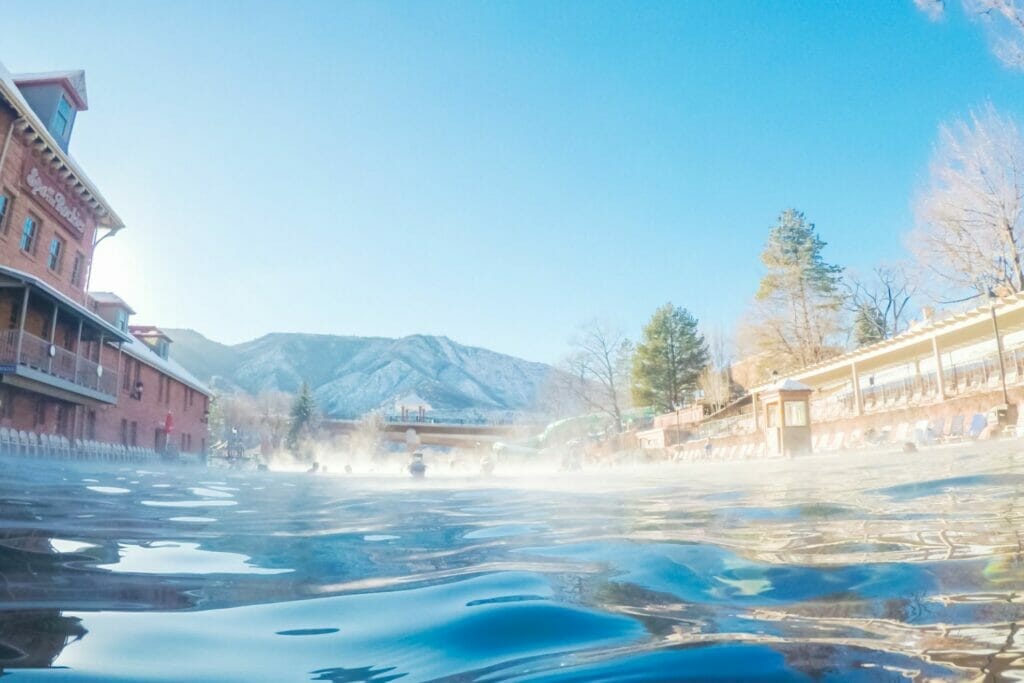
Nestled in the Rocky Mountains, Glenwood Springs is famous for its healing hot springs, which have attracted visitors seeking relaxation and rejuvenation for generations.
The Glenwood Hot Springs Pool is the largest mineral hot springs pool in the world, offering a soothing experience year-round.
The town’s charming downtown area features unique shops, restaurants, and historic landmarks like the Hotel Colorado.
Glenwood Springs also boasts the Glenwood Caverns Adventure Park, where visitors can explore cave formations and enjoy thrilling rides with scenic views.
23. Royal Gorge Bridge
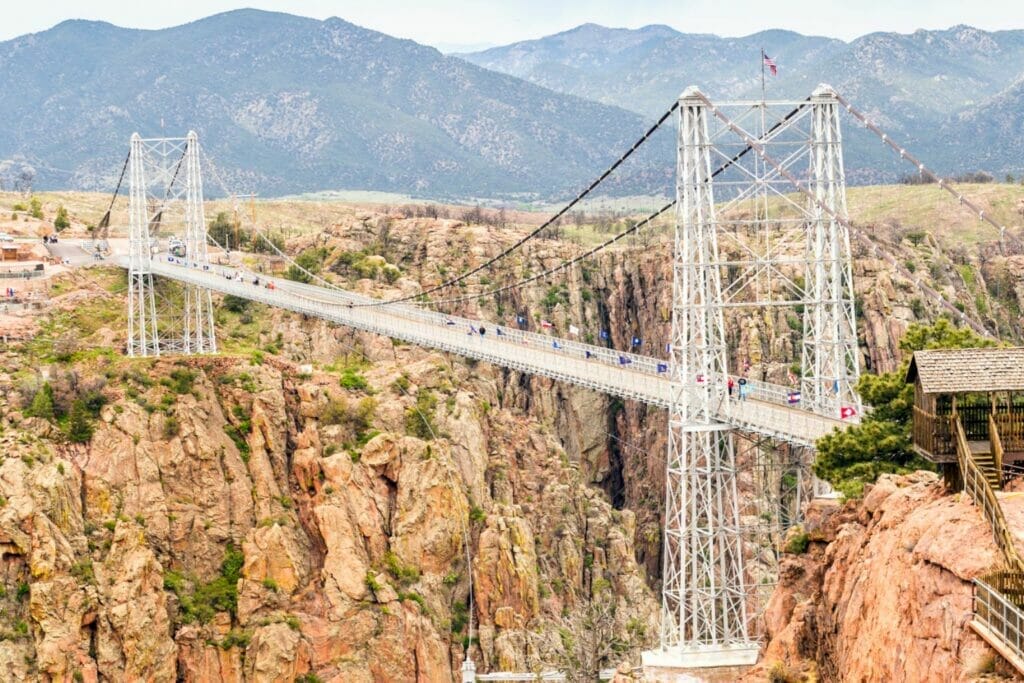
The Royal Gorge Bridge is an engineering marvel that spans a dramatic chasm, providing visitors with awe-inspiring views of the Arkansas River below.
The bridge is one of the highest suspension bridges in the world, offering a heart-pounding experience for those who venture across it.
The Royal Gorge Bridge and Park also feature attractions like a scenic gondola ride, zip line adventures, and an aerial tramway that provide unique perspectives of the rugged landscape.
24. Air Force Academy
The United States Air Force Academy, located in Colorado Springs, is not only a prestigious institution for training future leaders of the U.S. Air Force but also a place of architectural beauty.
The iconic Cadet Chapel features a striking modernist design with 17 spires that reach for the sky.
The academy’s campus offers stunning views of the surrounding mountains and serves as a symbol of national pride and military excellence.
25. Cheyenne Mountain Zoo
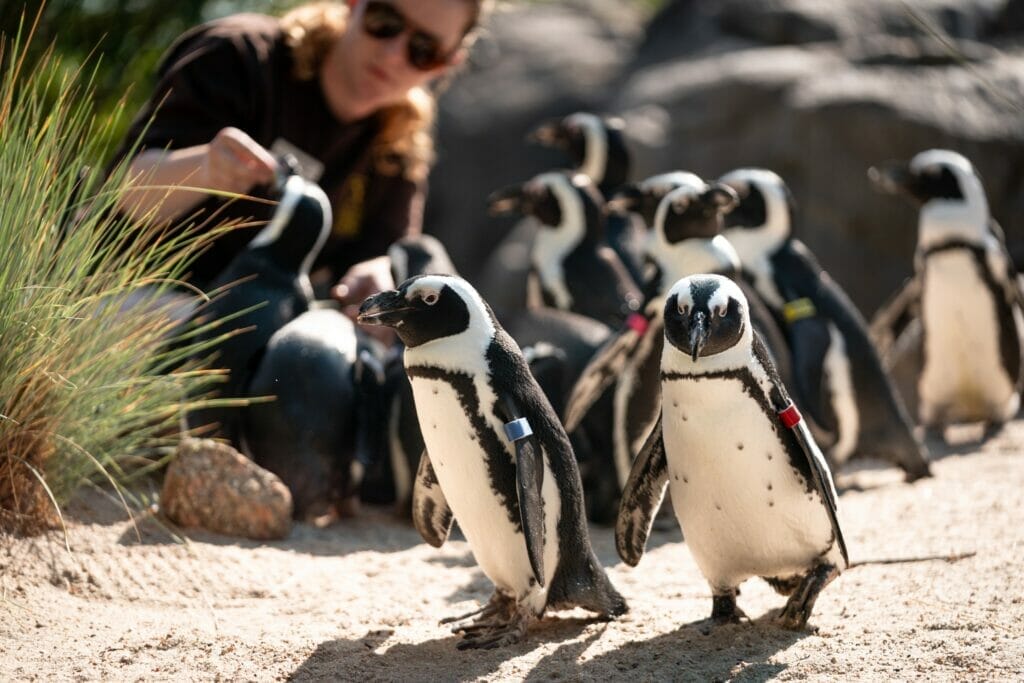
America’s only mountain zoo, Cheyenne Mountain Zoo in Colorado Springs, offers a unique opportunity to view animals in a naturalistic setting while enjoying panoramic views of the city and surrounding landscapes.
The zoo’s exhibits emphasize conservation and education, allowing visitors to connect with wildlife from around the world and learn about the importance of protecting our planet’s biodiversity.
26. Denver Art Museum

The Denver Art Museum (DAM) is a cultural gem that houses an extensive collection of artworks spanning various cultures and time periods.
The museum’s iconic Hamilton Building, designed by architect Daniel Libeskind, is a work of art in itself with its geometric architecture.
The DAM’s collection includes Native American, Western, European, and contemporary art, providing visitors with diverse perspectives and artistic experiences.
The museum’s commitment to engaging exhibitions and educational programs makes it a dynamic hub for creativity and cultural exploration.
27. Cherry Creek Arts Festival
This annual event in Denver’s Cherry Creek North neighborhood celebrates a wide range of art forms, from visual arts and sculpture to photography and live performances.
The festival showcases the work of talented artists from around the world, fostering creativity and cultural exchange.
Visitors can browse and purchase unique artworks while enjoying live music, food vendors, and interactive activities that appeal to all ages.
28. Film Festivals
Colorado hosts several film festivals that celebrate cinematic creativity and storytelling.
The Telluride Film Festival, held in the picturesque mountain town of Telluride, showcases a curated selection of films from various genres, attracting industry professionals and film enthusiasts.
The Denver Film Festival, one of the region’s largest, features an eclectic lineup of domestic and international films, bringing the magic of the big screen to audiences in the heart of the city.
29. Bison Herds

Bison, often referred to as “America’s national mammal,” can be found in select areas of Colorado, offering a glimpse into the state’s natural heritage and conservation efforts.
Genesee Park, located near Denver, is home to a herd of bison, allowing visitors to witness these iconic animals up close in a natural setting.
Bison are a symbol of the American West and a testament to the resilience of wildlife that once faced endangerment.
30. Colorado Railroad Museum
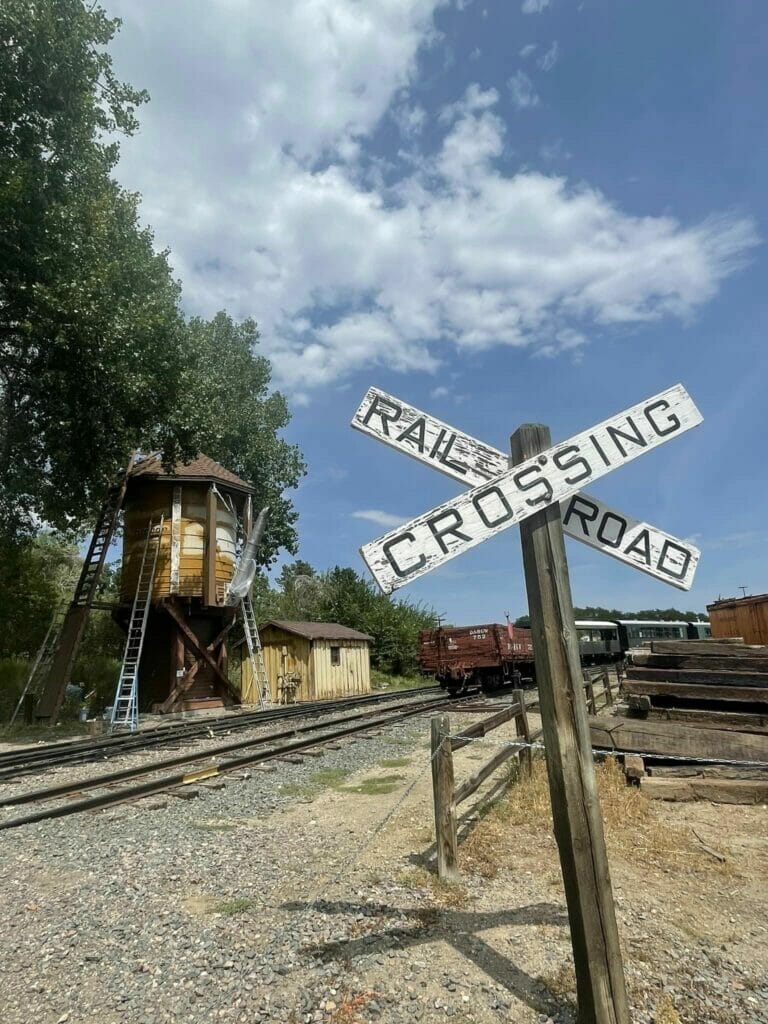
The Colorado Railroad Museum in Golden is a tribute to the state’s railroad history and the vital role trains played in its development.
The museum showcases an impressive collection of vintage locomotives, railcars, and historical artifacts that transport visitors back in time. Interactive exhibits and guided tours provide insights into the challenges and triumphs of building and operating railroads in the rugged terrain of the Rocky Mountains.
31. Pueblo Chiles
Pueblo chiles, often referred to as “Pueblo green chiles,” are a beloved culinary delicacy with a distinctive flavor profile.
Grown in the Pueblo region of Colorado, these chiles are known for their vibrant color and balanced heat.
Pueblo chiles find their way into a variety of dishes, from traditional Mexican cuisine to modern fusion creations.
The annual Pueblo Chile & Frijoles Festival celebrates the harvest season, featuring food vendors, live entertainment, and, of course, plenty of delicious chile-based dishes.
32. Astronomy
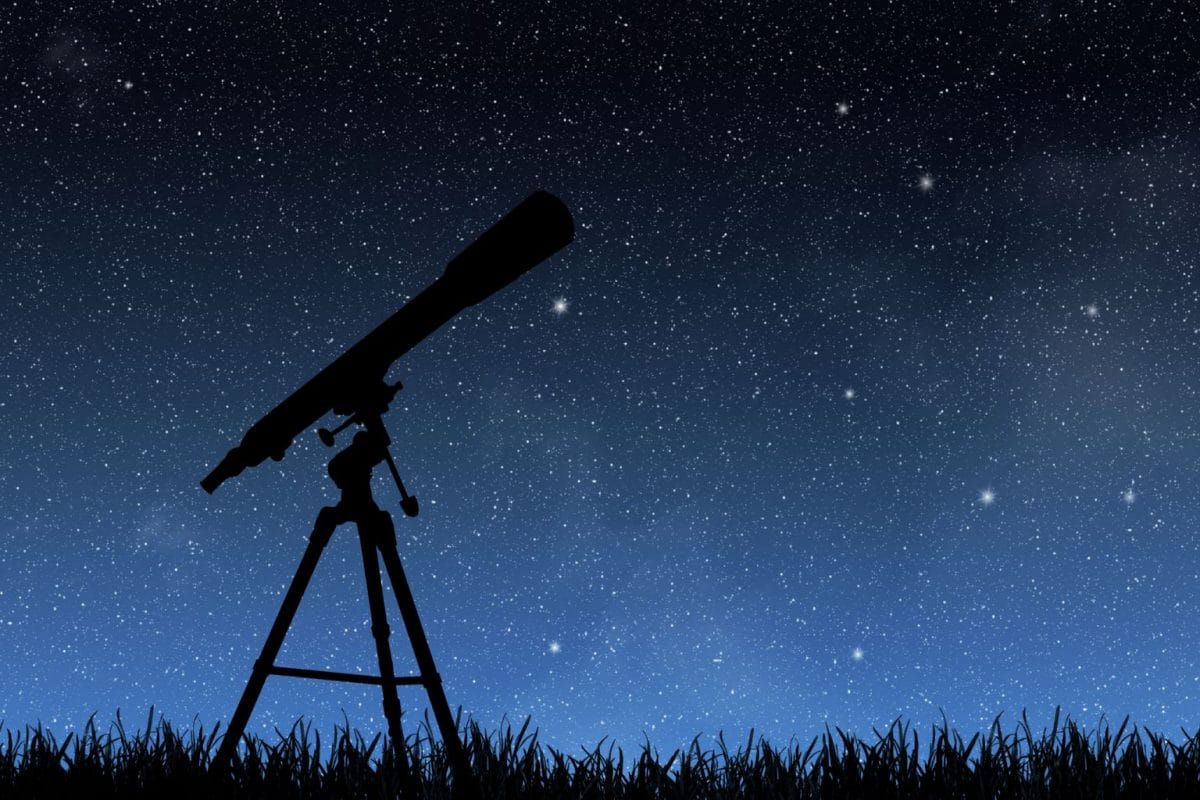
Colorado’s clear skies and minimal light pollution create ideal conditions for stargazing and astronomy enthusiasts.
Remote areas like the San Luis Valley offer pristine night skies that reveal the wonders of the universe.
Some regions have observatories that host educational programs, allowing visitors to explore celestial phenomena and learn about the mysteries of space.
33. Concert Venues
While Red Rocks Amphitheatre is undoubtedly the most iconic outdoor music venue in Colorado, the state offers a diverse array of concert spaces that cater to various musical genres and preferences.
Fiddler’s Green Amphitheatre in the Denver area provides a spacious setting for large-scale concerts, while intimate venues like the Mishawaka Amphitheatre along the Cache la Poudre River offer a more rustic and laid-back atmosphere.
The abundance of outdoor and indoor venues reflects Colorado’s vibrant music scene and the enthusiasm of its concert-going community.
34. Colorado Trail

The Colorado Trail is a long-distance hiking trail that traverses over 500 miles of the state’s diverse landscapes, from the foothills of Denver to the high alpine regions of the San Juan Mountains.
Hikers and backpackers undertake the trail to experience the natural beauty of Colorado, encountering a range of ecosystems and terrain along the way.
The trail’s segments offer varying levels of difficulty, making it accessible to both experienced thru-hikers and those seeking shorter adventures.
35. White-water Rafting
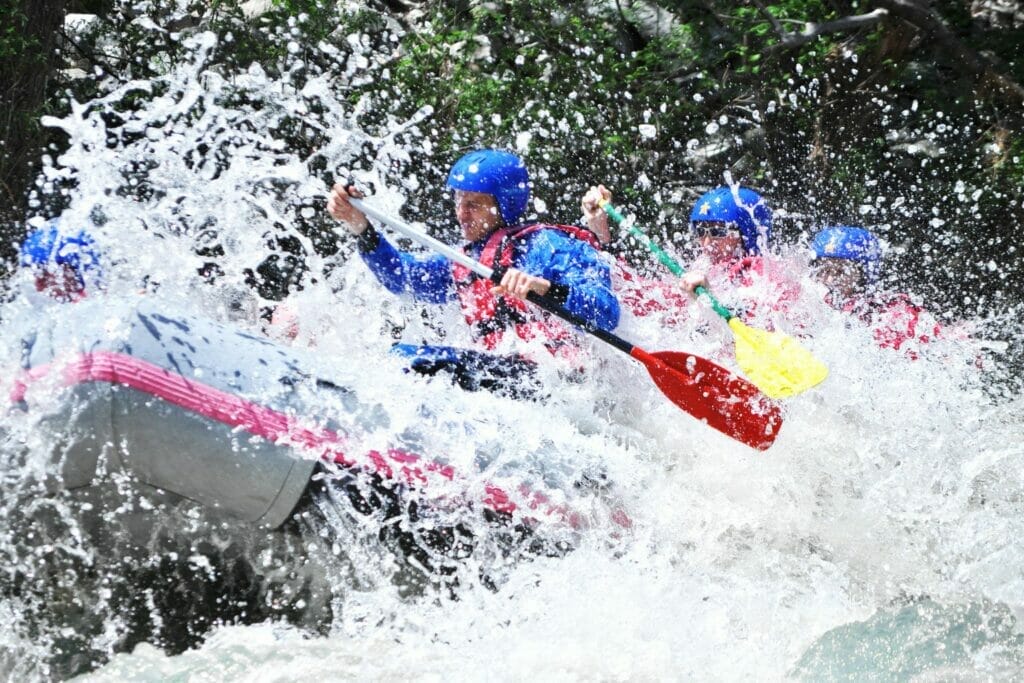
Colorado’s rivers offer thrilling white-water rafting experiences for adventurers seeking an adrenaline rush and a connection to nature.
The Arkansas River is a popular destination for rafting, with sections that cater to different skill levels.
The Royal Gorge section, known for its challenging rapids and dramatic scenery, provides a memorable white-water experience.
Guided rafting trips offer the opportunity to navigate turbulent waters while enjoying the camaraderie of fellow rafters and the guidance of experienced guides.
36. Independence Pass
Independence Pass is a scenic mountain pass that winds through the heart of the Rocky Mountains, offering panoramic views of rugged peaks, alpine lakes, and vibrant meadows.
The pass is a popular route for travelers seeking a picturesque drive, especially during the summer months when the road is open.
The journey includes hairpin turns and dramatic elevation changes, leading to breathtaking vistas that showcase Colorado’s stunning natural landscapes.
37. Hot Air Ballooning

Hot air ballooning provides a serene and exhilarating way to experience Colorado’s landscapes from a unique vantage point.
Floating above the countryside, passengers can take in panoramic views of mountains, valleys, and open plains.
Sunrise and sunset balloon rides offer magical moments as the changing light bathes the scenery in a warm glow.
Several regions in Colorado, including the Front Range and the Vail Valley, offer opportunities for memorable hot air balloon flights.
38. Mining Museums
Colorado’s mining heritage is preserved and celebrated through various museums that offer insights into the state’s early days of prospecting, extraction, and the rush for precious metals.
Museums like the Western Museum of Mining & Industry in Colorado Springs and the National Mining Hall of Fame and Museum in Leadville provide a window into the challenges and innovations that defined Colorado’s mining history.
Exhibits showcase mining equipment, historical artifacts, and interactive displays that educate visitors about the industry’s impact on the state’s development.
39. Dinosaur Ridge
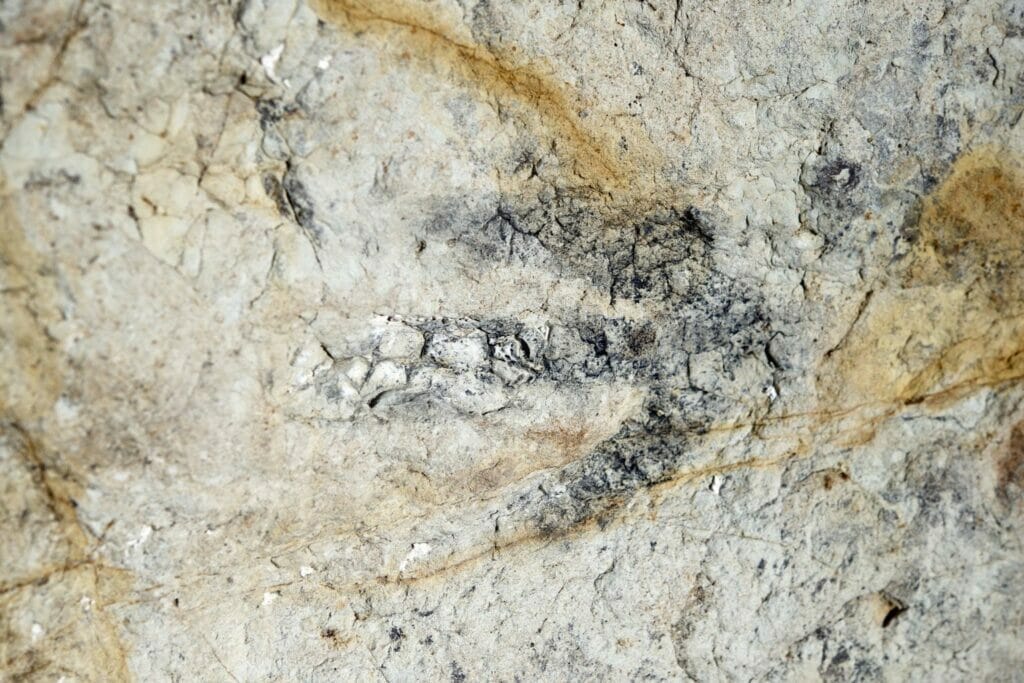
Dinosaur Ridge is a geological site near Morrison that showcases a treasure trove of dinosaur tracks and fossils embedded in the rocks.
Guided tours take visitors on a journey through prehistoric times, where they can witness evidence of ancient creatures that once roamed the area.
The site offers a fascinating glimpse into the world of paleontology and provides a tangible link to Colorado’s prehistoric past.
40. Cannabis Tourism
Colorado’s pioneering decision to legalize recreational marijuana has attracted curious travelers interested in exploring the state’s cannabis culture.
41. Mountain Towns
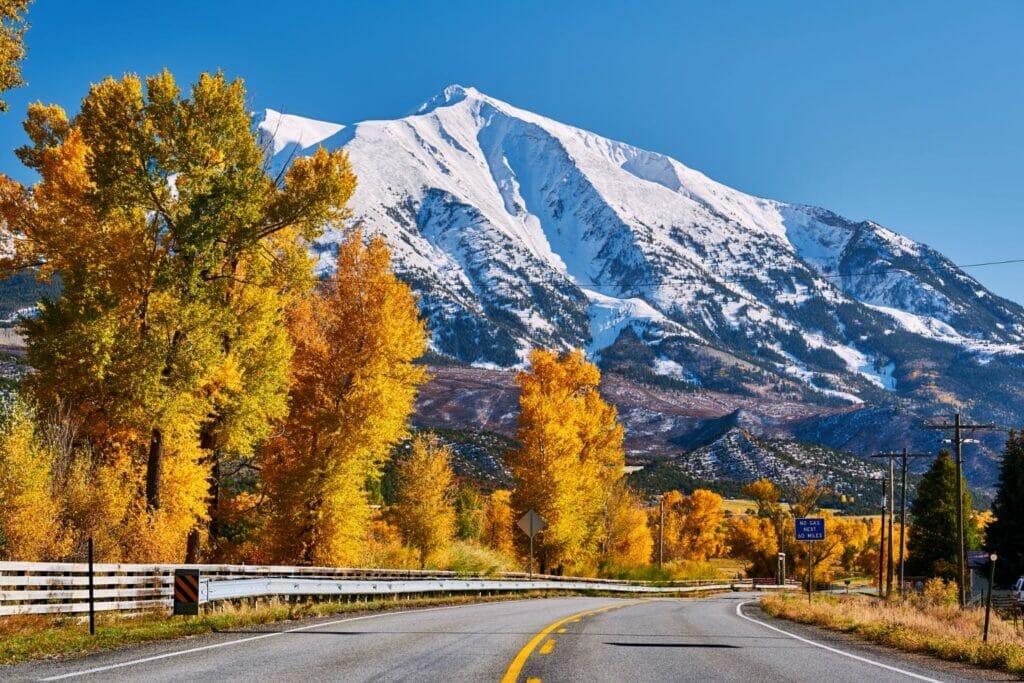
Colorado’s charming mountain towns are idyllic retreats that capture the essence of mountain living.
Towns like Telluride, Breckenridge, and Estes Park offer a blend of local culture, outdoor adventure, and stunning scenery.
Telluride’s Victorian architecture and world-class skiing attract visitors seeking a luxurious mountain experience.
Breckenridge is known for its historic Main Street, diverse ski terrain, and vibrant arts scene.
Estes Park, located near Rocky Mountain National Park, offers a gateway to alpine landscapes and opportunities for wildlife viewing.
Each town has its unique character, making mountain living accessible and inviting to both residents and visitors.
Want to know what things the other US states are known for? Check out our other guides!
- Interesting Things Alabama is Known For
- Interesting Things Alaska is Known For
- Interesting Things Arizona is Known For
- Interesting Things Arkansas is Known For
- Interesting Things California is Known For
- Interesting Things Connecticut is Known For
- Interesting Things Delaware is Known For
- Interesting Things Florida is Known For
- Interesting Things Georgia is Known For
- Interesting Things Hawaii is Known For
- Interesting Things Idaho is Known For
- Interesting Things Illinois is Known For
- Interesting Things Indiana is Known For
- Interesting Things Iowa is Known For
- Interesting Things Kansas is Known For
- Interesting Things Kentucky is Known For
- Interesting Things Louisiana is Known For
- Interesting Things Maine is Known For
- Interesting Things Maryland is Known For
- Interesting Things Massachusetts is Known For
- Interesting Things Michigan is Known For
- Interesting Things Minnesota is Known For
- Interesting Things Mississippi is Known For
- Interesting Things Missouri is Known For
- Interesting Things Montana is Known For
- Interesting Things Nebraska is Known For
- Interesting Things Nevada is Known For
- Interesting Things New Hampshire is Known For
- Interesting Things New Jersey is Known For
- Interesting Things New Mexico is Known For
- Interesting Things New York is Known For
- Interesting Things North Carolina is Known For
- Interesting Things North Dakota is Known For
- Interesting Things Ohio is Known For
- Interesting Things Oklahoma is Known For
- Interesting Things Oregon is Known For
- Interesting Things Pennsylvania is Known For
- Interesting Things Rhode Island is Known For
- Interesting Things South Carolina is Known For
- Interesting Things South Dakota is Known For
- Interesting Things Tennessee is Known For
- Interesting Things Texas is Known For
- Interesting Things Utah is Known For
- Interesting Things Vermont is Known For
- Interesting Things Virginia is Known For
- Interesting Things Washington is Known For
- Interesting Things West Virginia is Known For
- Interesting Things Wisconsin is Known For
- Interesting Things Wyoming is Known For
Get the All-American Travel Secrets!
Don't miss out on America's hidden gems!
